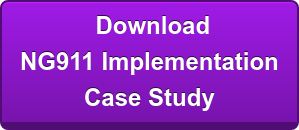
Today: FCC Takes Action On Wireless Infrastructure, FCC To Auction Off Numbers In the 833 Toll Free Code, FCC Opens Rulemaking To Implements Kari’s Law, FCC Eliminates Form 325
FCC Takes Action On Wireless Infrastructure
At its meeting this morning, the FCC voted to issue a Declaratory Ruling focusing on local fees for the authorizations necessary to deploy small wireless facilities. The ruling:
- Explains when a state or local regulation of wireless infrastructure deployment constitutes an effective prohibition of service prohibited by Sections 253 or 332(c)(7) of the Communications Act;
- Concludes that Section 253 and 332(c)(7) limit state and local governments to charging fees that are no greater than a reasonable approximation of objectively reasonable costs for processing applications and for managing deployments in the rights-of-way.
- Identifies specific fee levels for small wireless facility deployments that presumably comply with the relevant standard; and
- Provides guidance on when certain state and local non-fee requirements that are allowed under the Act—such as aesthetic and undergrounding requirements—may constitute an effective prohibition of service.
- Establishes two new shot clocks for small wireless facilities (60 days for collocation on preexisting structures and 90 days for new builds);
- Codifies the existing 90 and 150 day shot clocks for wireless facility deployments that do not qualify as small cells that were established in 2009;
- Concludes that all state and local government authorizations necessary for the deployment of personal wireless service infrastructure are subject to those shot clocks; and
- Adopts a new remedy for missed shot clocks by finding that a failure to act within the new small wireless facility shot clock constitutes a presumptive prohibition on the provision of services.
FCC To Auction Off Numbers In the 833 Toll Free Code
At its meeting this morning the FCC voted to hold the first-ever auction to distribute 17,000 numbers in the new 833 toll free code for which there have been multiple, competing requests. Many of these numbers are easy to remember, such as 833-LAWYERS or 833-333-3333. The FCC will also reserve certain 833 numbers for distribution to government and nonprofit entities that request them for public health and safety purposes. The Order will also authorize and accommodate the use of a secondary market for numbers awarded at auction to further distribute these numbers to the entities that value them most.
By using an auction, the FCC will ensure that sought-after numbers are awarded to the parties that value them most. The FCC will study the results of the auction to determine how to best use the mechanism to distribute toll free numbers equitably and efficiently in the future as well. Currently, toll free numbers are assigned on a first-come, first-served basis which does not consider the need for or the value placed on particular numbers.
Revenues from the auction will be used to defray the cost of toll free numbering administration, reducing the cost of numbering for all users.
FCC Opens Rulemaking To Implements Kari’s Law
At its meeting this morning, the FCC voted to issue a Notice of Proposed Rulemaking to implement Kari’s Law. That law which requires multi-line telephone systems to enable users to dial 911 directly, without having to dial a prefix (such as a “9”) to reach an outside line. The Law also requires multi-line telephone systems to provide notification, such as to a front desk or security office, when a 911 call is made in order to facilitate building entry by first responders.
The Notice also seeks comment on rules intended to ensure that “dispatchable location” information, such as the street address, floor level, and room number of a 911 caller, is conveyed with 911 calls, regardless of the technological platform used, so that first responders can be quickly dispatched to the caller’s location. The proposed rules that would apply dispatchable location requirements to multi-line telephone systems, fixed telephone service, interconnected Voice over Internet Protocol (VoIP) services, and Telecommunications Relay Service. Mobile wireless services are already required to provide either dispatchable or coordinate-based location information with 911 calls.
The Notice also proposes to consolidate all the FCC’s 911 rules from multiple rule parts into a single rule part, making it easier for stakeholders, such as service providers and emergency management officials, to more easily ascertain 911 requirements.
FCC Eliminates Form 325
The FCC also voted to eliminate FCC Form 325, Annual Report of Cable Television Systems, which collected operational information from cable television systems nationwide. The FCC found that, due to marketplace, operational, and technological changes, the form has become increasingly obsolete. Additionally, the FCC itself has made limited use of Form 325 data in recent years, and much of the same information is available from alternative sources. By eliminating the Form 325 filing requirement, the FCC believes it has lifted a significant regulatory burden imposed on cable operators and ensured that its rules reflect current marketplace realities.
____________________________
The Regulatory Mix, Inteserra’s blog of telecom related regulatory activities, is a snapshot of PUC, FCC, legislative, and occasionally court issues that our regulatory monitoring team uncovers each day. Depending on their significance, some items may be the subject of an Inteserra Briefing.






